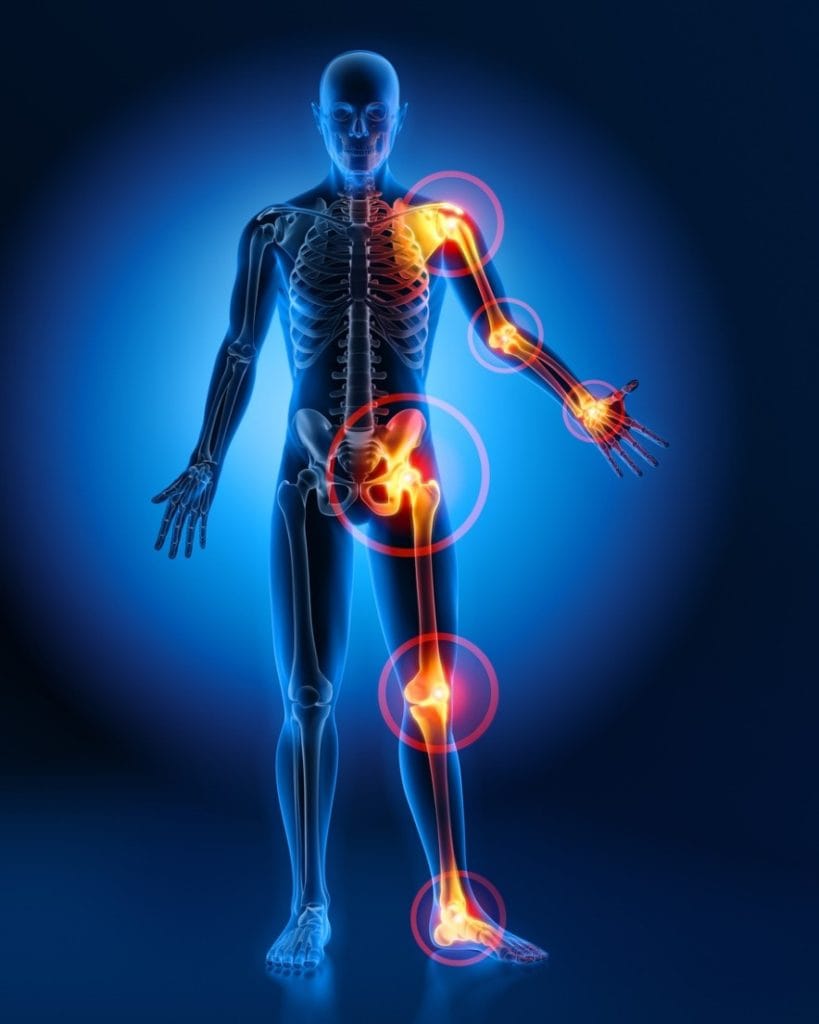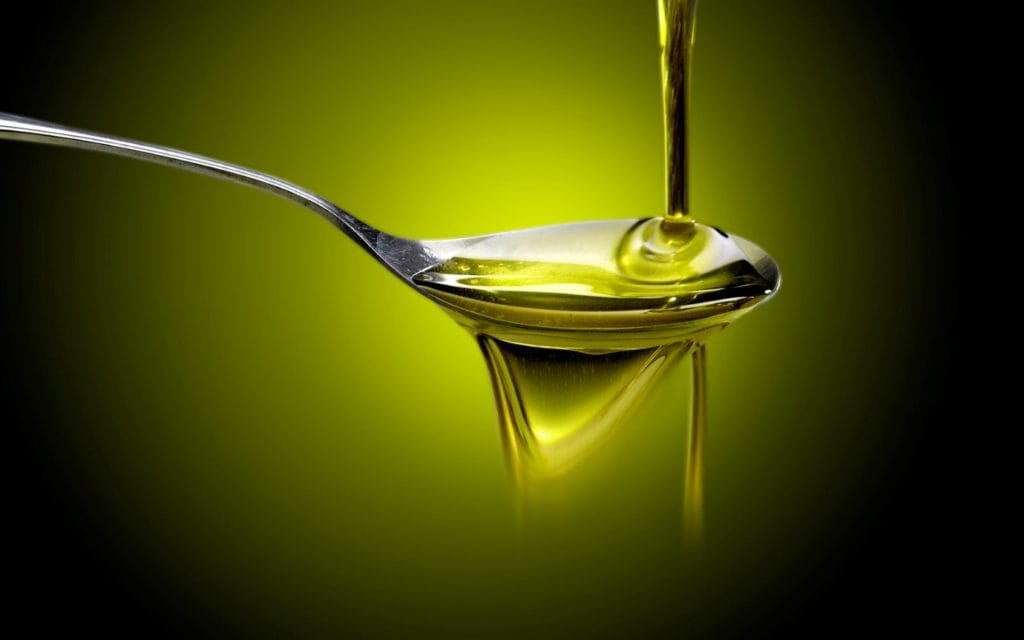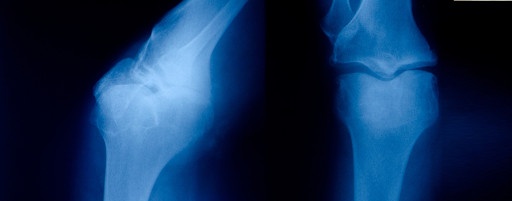A Further Health Benefit Of Best Extra Virgin Olive Oil
Updated 23rd November 2022

Summary
- Osteoarthritis (OA) is a form of arthritis that features the breakdown and eventual loss of the cartilage of one or more joints.
- OA occurs more frequently as we age commonly affecting the hands, feet, spine, and large weight-bearing joints, such as the hips and knees.
- Recently, data from the Osteoarthritis Initiative (OAI) have demonstrated that adherence to the Mediterranean diet is associated not only with better quality of life but also, significantly, with a lower prevalence of OA.
- Polyphenol Ligstroside-Aglycone (LA) has been shown to have beneficial effects in combating Osteoarthritis
Contents
- Extra Virgin Olive Oil And Osteoarthritis
- What Is Osteoarthritis?
- What Causes Primary Osteoarthritis?
- Secondary Osteoarthitis
- How Can Extra Virgin Olive Oil Help Combat Osteoarthritis
- Morocco Gold Extra Virgin Olive Oil Is High In Polyphenols
- Polyphenol : Ligstroside-Aglycone (LA) : It’s Role In Combating Osteoarthritis
- A Study Of Ligstroside-Aglycone In Treatment Of Osteoarthritis
- The Mediterranean Diet & Psoriatic Arthritis
Extra Virgin Olive Oil And Osteoarthritis
Before understanding how extra virgin olive oil can help combat Osteoarthritis it is helpful to find out more about it, its symptoms and causes. With more insight it is much easier to see the benefits of how using extra virgin olive oil in your diet can combat Osteoarthritis.
What Is Osteoarthritis?
Osteoarthritis (OA) is a form of arthritis that features the breakdown and eventual loss of the cartilage of one or more joints. Cartilage is a protein substance that serves as a “cushion” between the bones of the joints. Among the over 100 different types of arthritis conditions, osteoarthritis is the most common joint disease.
OA occurs more frequently as we age. Before age 45, osteoarthritis occurs more frequently in males. After 55 years of age, it occurs more frequently in females. In the United States, all races appear equally affected. Hand osteoarthritis, hip osteoarthritis, and knee osteoarthritis are much more common in seniors than younger people. A higher incidence of osteoarthritis exists in the Japanese population, while South-African blacks, East Indians, and Southern Chinese have lower rates.
Osteoarthritis commonly affects the hands, feet, spine, and large weight-bearing joints, such as the hips and knees. Osteoarthritis usually has no known cause and is referred to as primary osteoarthritis. When the cause of the osteoarthritis is known, the condition is referred to as secondary OA.
What Causes Primary Osteoarthritis?
As part of normal life, your joints are exposed to a constant low level of damage. In most cases, your body repairs the damage itself and you do not experience any symptoms. But in osteoarthritis, the protective cartilage on the ends of your bones breaks down, causing pain, swelling and problems moving the joint. Bony growths can develop, and the area can become red and swollen.
The exact cause is not known, but several things are thought to increase your risk of developing osteoarthritis, including:
Natural Ageing
Your risk of developing the condition increases as you get older. Primary (idiopathic) osteoarthritis, OA not resulting from injury or disease, is partly a result of natural ageing of the joint. With aging, the water content of the cartilage increases, and the protein makeup of cartilage degenerates as a function of biologic processes. Eventually, cartilage begins to degenerate by flaking or forming tiny crevasses. In advanced osteoarthritis, there is a total loss of the cartilage cushion between the bones of the joints.
Joint Injury
Repetitive use of the worn joints and overusing your joint after an injury or operation when it has not had enough time to heal can mechanically irritate and inflame the cartilage, causing joint pain and swelling.
Loss Of Cartilage
Loss of the cartilage cushion causes friction between the bones, leading to pain and limitation of joint mobility. Inflammation of the cartilage can also stimulate new bone outgrowths (spurs, also referred to as osteophytes) to form around the joints.
Family History
Osteoarthritis occasionally can develop in multiple members of the same family, implying a hereditary (genetic) basis for this condition.
Osteoarthritis is therefore felt to be a result of a combination of each of the above factors that ultimately lead to a narrowing of the cartilage in the affected joint.
Secondary Osteoarthitis
Secondary osteoarthritis is a form of osteoarthritis that is caused by another disease or condition. Conditions that can lead to secondary osteoarthritis include :
- Obesity : being obese puts excess strain on your joints, particularly those that bear most of your weight, such as your knees and hips. Obesity causes osteoarthritis by increasing the mechanical stress on the joint and therefore on the cartilage. In fact, next to aging, obesity is the most significant risk factor for osteoarthritis of the knees. The early development of osteoarthritis of the knees among weightlifters is believed to be in part due to their high body weight. Repeated trauma to joint tissues (ligaments, bones, and cartilage) is believed to lead to early osteoarthritis of the knees in soccer players and army military personnel. Interestingly, health studies have not found an increased risk of osteoarthritis in long-distance runners.
- Repeated trauma or surgery to the joint structures.
- Abnormal joints at birth (congenital abnormalities) : Some people are born with abnormally formed joints (congenital abnormalities) that are vulnerable to mechanical wear, causing early degeneration and loss of joint cartilage. Osteoarthritis of the hip joints is commonly related to structural abnormalities of these joints that had been present since birth.
- Gout : crystal deposits in the cartilage can cause cartilage degeneration and osteoarthritis. Uric acid crystals cause arthritis in gout, while calcium pyrophosphate crystals cause arthritis in pseudogout.
- Diabetes, hemochromatosis, and other hormone disorders : hormone disturbances, such as diabetes and growth hormone disorders, are also associated with early cartilage wear and secondary osteoarthritis.
Symptoms Of Osteoarthritis
The main symptoms of osteoarthritis are joint pain and stiffness, and problems moving the joint. Some people also have symptoms such as: – swelling – tenderness – grating or crackling sound when moving the affected joints
The severity of osteoarthritis symptoms can vary greatly from person to person, and between different affected joints.
For some people, the symptoms can be mild and may come and go. Other people can experience more continuous and severe problems which make it difficult to carry out everyday activities.
Almost any joint can be affected by osteoarthritis, but the condition most often causes problems in the knees, hips and small joints of the hands.
You should see your GP if you have persistent symptoms of osteoarthritis so they can confirm the diagnosis and prescribe any necessary treatment.
Source: https://www.nhs.uk/conditions/
How Can Extra Virgin Olive Oil Help Combat Osteoarthritis

Extra Virgin Olive Oil is probably the most extensively researched foodstuff on the planet and the health benefits are evidence based. Thanks to the recent spotlight on the Mediterranean Diet, extensive research has been done on the composition of best olive oil. What has been discovered is an extensive list of phytonutrients; one of the most praised is its polyphenols.
Beneficial effects of natural plant polyphenols on the human body have been evaluated in a number of scientific research projects. Bioactive polyphenols are natural compounds of various chemical structures. Their sources are mostly fruits, vegetables, nuts and seeds, roots, bark, leaves of different plants, herbs, whole grain products, processed foods (dark chocolate), as well as tea, coffee, and red wine. Polyphenols are believed to reduce morbidity and/or slow down the development of cardiovascular and neurodegenerative diseases as well as cancer. Biological activity of polyphenols is strongly related to their antioxidant properties. They tend to reduce the pool of reactive oxygen species as well as to neutralize potentially carcinogenic metabolites. A broad spectrum of health-promoting properties of plant polyphenols comprises antioxidant, anti-inflammatory, anti-allergic, anti-atherogenic, anti-thrombotic, and anti-mutagenic effects. Scientific studies present the ability of polyphenols to modulate the human immune system by affecting the proliferation of white blood cells, and also the production of cytokines or other factors that participate in the immunological defense. The aim of the review is to focus on polyphenols of olive oil in context of their biological activities.
Keywords: olive oil, Olea europea, polyphenols, oleuropein, hydroxytyrosol, anticancer therapy
Polyphenols have been shown to reduce morbidity and/or slow down the progression of cardiovascular, neurodegenerative, and cancer diseases. The mechanism of action of polyphenols strongly relates to their antioxidant activity. Polyphenols are known to decrease the level of reactive oxygen species in the human body. In addition, health-promoting properties of plant polyphenols comprise anti-inflammatory, anti-allergic, anti-atherogenic, anti-thrombotic, and anti-mutagenic effects. There is a body of research demonstrating their ability to modulate the human immune system by affecting the proliferation and activity of white blood cells, as well as the production of cytokines or other factors that participate in immunological defence.
Morocco Gold Extra Virgin Olive Oil Is High In Polyphenols
Our latset harvest has produced a low acidity level of 0.2% together with the highest level of polyphenols yet seen in our extra virgin olive oil.
| 3,4 DHPEA-EDA | 85 mg/kg |
| Hydroxytyrosol | 5 mg/kg |
| Lignanes | 26 mg/kg |
| Ligstroside aglycone (p, HPEA-EA) | 20 mg/kg |
| Oleuropein aglycone (3,4 DHPEA-EA) | 71 mg/kg |
| Oleocanthal p, HPEA-EDA | 65 mg/kg |
| Tyrosol | 372 mg/kg |
| Polyphenols Total | 644 mg/kg |
Polyphenol : Ligstroside-Aglycone (LA) : It’s Role In Combating Osteoarthritis
This polyphenol is synonymous with p-HPEA-Elenolic acid. It is a member of the Tyrosol family of polyphenols and has the chemical formula : C19H22O7
While information on LA bioactivity is limited, a few years ago, LA was demonstrated to behave as an antioxidant. Furthermore, LA has been shown to have anti-inflammatory effects by controlling and downregulating NF-κB (NF-kB is a type of DNA that is thought to play a pivotal role in the initiation of osteoarthritis and the perpetuation of chronic inflammation in rheumatoid arthritis) as well as the potential to induce a caloric restriction-like state that affects the muscle, brain, fat tissue and kidney, particularly through activation and increased levels of sirtuins. (Sirtuins are a family of proteins that regulate cellular health. They play a key role in regulating cellular homeostasis, keeping cells in balance).
A Study Of Ligstroside-Aglycone In Treatment Of Osteoarthritis

In a recent study at the Faculty Of Pharmacy Seville and the Biomedical Research Institute Coruna (M.S. Meiss, M. Sanchez-Hidalgo, A. González-Benjumea) the effectiveness of LA on osteoarthritis (OA) was examined.
Osteoarthritis is currently, the most frequent cause of pain, deformity and dysfunction in the elderly. It is a late-onset, complex disease of the joint, characterised by progressive failure of the extracellular cartilage matrix (ECM), together with changes in the synovium and subchondral bone.
OA persists as the most common form of arthritis worldwide and the sixth leading cause of disability. Unlike most tissues, articular cartilage does not contain blood vessels, nerves or lymphatics, rather, articular cartilage is composed of a dense ECM with a sparse distribution of highly specialised cells called chondrocytes. Aberrant expression of degradative proteases or catabolic mediators is induced in OA chondrocytes that contributes to cartilage destruction.
To date, there is no definitive cure for this debilitating disease. The mechanism of disease progression in OA remains largely unknown and thus, to date, a more personalised approach is required to aid patient disease management. Current treatments are targeted at reducing symptoms of the inflammatory reaction that occurs following destruction of the essential joint cartilage. These treatments, however, do not prevent the significant pain associated with OA or the often reported restriction of mobility and activity.
To address this unmet need, alternative approaches, including the use of polyphenols as a novel therapeutic intervention are under examination. The objective of this study was to analyse if the polyphenols found in extra virgin olive oil are able to reverse the catabolic activity that contribute to cartilage destruction in OA.
Two polyphenols from extra virgin olive oil (EVOO), oleocanthal (OLC) and ligstroside aglycone (LA), plus a chemically modified acetylated ligstroside aglycone (A-LA), and two marine polyunsaturated fatty acids, eicosapentaenoic acid (EPA) and docosahexaenoic acid (DHA), were examined as potential anti-inflammatory agents for OA.
The Results
Acetylated ligstroside showed the most promising results for implementation in treating OA as it reduced the expression of pro-inflammatory genes such as inducible nitric oxide (iNOS), matrix metalloprotease-13 (MMP13) and interleukin-1β (IL1B) at both RNA and protein levels; decreased nitric oxide (NO) levels from cartilage explants and also reduced proteoglycan (PG) losses in human osteoarthritic cartilage explants and chondrocytes.
These results substantiate the role of polyphenols in OA with implications for therapeutic intervention and our understanding of OA pathophysiology.
Recently, data from the Osteoarthritis Initiative (OAI) have demonstrated that adherence to the Mediterranean diet is associated not only with better quality of life but also, significantly, with a lower prevalence of OA. Given that the general population can be viewed as at risk in the development of OA in later life, an approach that relies on dietary modification is attractive in terms of risk / benefit and, potentially, an approach that is more likely to be implementable. Indeed, as an alternative to traditional treatments, alternative modalities have come to the fore including the effects of polyphenols as non-invasive treatments, based on the evidence that epigenetic changes are triggered by dietary nutrients and contribute to the prevention of a number of diseases.
Source: https://journals.sagepub.com/doi/full/10.1177/2041731420922701
The Mediterranean Diet & Psoriatic Arthritis
Following a Mediterranean Diet can help relieve the symptoms of Psoriatic Arthritis, due to the anti-inflammatory properties of the foods it contains.
As reported in Verywellhealth the anti-inflammatory compounds present in fruits, vegetables and extra virgin olive oil – the key elements of The Mediterranean Diet – can reduce the symptoms of this condition which affects 1 in 3 people who have Psoriasis.
The article sets out the top five foods to eat with Psoriatic Arthritis, which are:
Fruits and Vegetables
Fruits and vegetables are full of vitamins, minerals, phytochemicals, and antioxidants that have anti-inflammatory effects. A diet rich in fruits and vegetables can also help with weight loss and weight management, as these foods are relatively low in calories and high in fiber, keeping you full without exceeding your energy needs.
Fatty Fish
Fatty fish, such as salmon, tuna, and mackerel, are rich in omega-3 fatty acids, which are known to reduce inflammation throughout the body. Salmon is a great source of vitamin D and vitamin B12. Both vitamins are important in lowering inflammation and have been used to help treat psoriasis. Vitamin D also has positive effects on autoimmunity, which may help reduce the severity of diseases such as PsA.
Whole Grains
Compared to refined grains such as white bread, rice, and pasta, whole grains contain more antioxidants, fiber, vitamins, and minerals. Types of whole grains include:
- Oats
- Brown rice
- Quinoa
- Barley
- Farro
- Millet
- Whole grain cereal, pasta, and bread
Antioxidants in whole grains are anti-inflammatory. One study found that compared with a diet rich in refined grains, a diet rich in whole grains reduced body weight and low-grade inflammation, both of which can help manage PsA.
Turmeric
Turmeric root has been used in Ayurvedic medicine for centuries to treat the symptoms of joint pain and inflammation in arthritis. The active compound curcumin, present in turmeric, has significant anti-inflammatory, antioxidant, antimicrobial, and anticancer properties. Adding turmeric to your diet, like in a latte or curry stir-fry, may reduce inflammation and managing your symptoms of PsA.
Studies have shown that curcumin may help manage the symptoms of many conditions, such as rheumatoid arthritis (RA) and irritable bowel syndrome (IBS). Most of the data, however, comes from curcumin supplementation, and consuming high doses is linked to gastrointestinal upset, increased risk of bleeding, and other side effects.
Ginger
Like turmeric, ginger is a root that contains anti-inflammatory and antioxidant compounds that have been used to treat diseases similar to PsA, such as rheumatoid arthritis (RA). The active components in ginger, including gingerol, shogol, and zingerone, can help ease joint pain, a common symptom of PsA. These compounds have been shown to target some of the same pathways as common arthritis medications.
Why The Mediterranean Diet Helps With Psoriatic Arthritis
As outlined above, the Mediterranean Diet focuses on whole grains, fruits, vegetables, nuts, extra virgin olive oil, and fatty fish—foods that are rich in antioxidants and anti-inflammatory compounds. Several studies have found associations between following a Mediterranean diet and less severe PsA symptoms.

